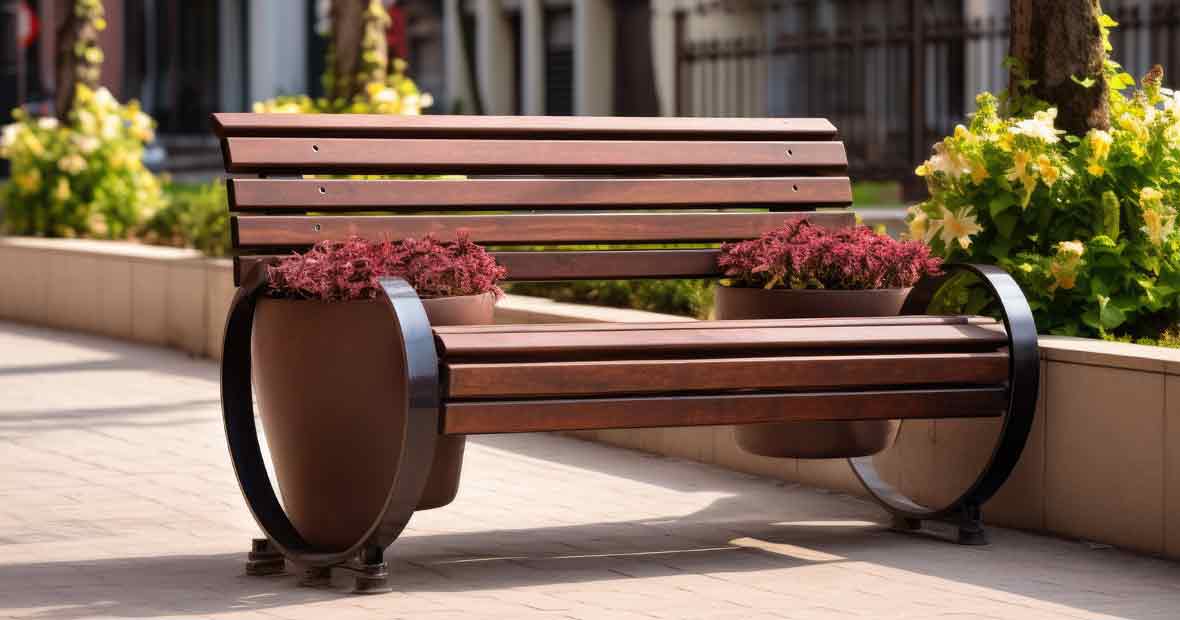
Welcome to a journey through the world of street furniture. Often taken for granted or overlooked, these everyday objects, from benches to bollards, have a fascinating story to tell. This journey will take us through the diverse varieties of street furniture, their design, and the materials used in their creation. The discussion will continue to the role street furniture plays in creating inviting urban environments, focusing on seating and shelter arrangements, functional design elements, and the innovative use of materials. Finally, a glance towards the future will provide insights into the evolving functional and social aspects of this essential component of cityscapes.
From Benches to Bollards: Exploring Varieties of Street Furniture
Street furniture, from benches to bollards, has evolved over time in design, materiality, and functionality. To understand its evolution, a glance at the past reveals how simple wooden benches and metal bollards have gradually transformed into ingenious innovations incorporating cutting-edge materials and technology. Today, the urban landscape is adorned with a variety of street furniture, including picnic seats, cycle racks, planters, and shelters, each contributing to the aesthetics and safety of public spaces.
Moreover, these elements, ranging from simple seating to complex urban products, play a significant role in shaping the public realm. The presence of accessible and well-designed street furniture enhances social interaction, boosts community spirit, and improves the overall quality of life in a city. Current trends in street furniture design lean towards sustainability, durability, and inclusivity. There's a growing preference for materials that are eco-friendly and easy to maintain while ensuring accessibility for all, including individuals with disabilities.
However, the placement and installation of street furniture pose challenges. Issues such as vandalism, maintenance, and the suitability of materials need to be addressed. Despite these challenges, cities worldwide are excelling in installing practical, aesthetically pleasing, and innovative street furniture, setting precedents for others to learn from. The impact of well-planned street furniture on citizen wellbeing is undeniable, demonstrating how urban spaces can be transformed into livable, enjoyable environments.
Material Matters: Iron, Timber, Steel and Beyond in Street Furniture Design
The choice of materials plays a significant role in the overall project success and can impact the environmental factors, costs, durability, and maintenance considerations. For more information on successful case studies of urban furniture projects, please refer to the provided link. The current trends in materials used in urban furniture design are constantly evolving, with recent innovations pushing the boundaries of what's possible. As the manufacturing processes adapt to these different materials, the environmental impacts and social and cultural implications of material choice are becoming increasingly important considerations. Looking forward, the use of innovative materials in urban furniture design is likely to continue, creating exciting opportunities for new forms of expression in our urban environments.
Creating Inviting Urban Environments: How Street Furniture Enhances City Spaces
The impact of well-thought-out street furniture on urban spaces is profound. It not only provides functionality but also serves as an aesthetic element that enhances the overall appeal of city spaces.
Designing for Comfort: Seating and Shelter Arrangements
Thoughtful placement and design of street furniture like benches and shelters can significantly enhance the comfort of urban environments. They provide inviting spaces for people to rest, socialize, or just enjoy the surroundings. These elements help create a sense of community and encourage more foot traffic, making the city spaces vibrant and lively.
Functional Design: Bollards, Cycle Racks, and Parking Spaces
Functional elements like bollards and cycle racks help in organizing urban space. Bollards ensure pedestrian safety while cycle racks promote eco-friendly transportation. Adequate parking spaces, on the other hand, help manage vehicular traffic efficiently, contributing to a smoother urban experience.
Innovative Use of Materials in Outdoor Spaces
The use of innovative materials in street furniture can significantly enrich the visual appeal of outdoor areas. The combination of functionality and aesthetics can transform public spaces, making them more inviting and comfortable for residents and visitors alike.
Looking Ahead: The Future of Functional and Social Aspects of Street Furniture
Considering the vibrant changes in urban areas, an intriguing aspect of focus lies in the future of functional and social aspects of street furniture. From benches that serve as social hubs to bollards that ensure safety, street furniture has always played a pivotal role in shaping public spaces.
The progression towards a more socially inclusive and functional urban environment is evident in the current trends of street furniture design. A glance towards the future reveals an increased emphasis on the social role that street furniture will likely play. Theories suggest that furniture pieces could significantly contribute to encouraging interactions among people, thereby fostering a sense of community in public spaces.
For instance, the integration of street furniture such as litter bins and parking spaces not only serves a practical purpose but also aids in the overall aesthetics and functionality of the area. With innovative design and placement, these elements can significantly enhance the convenience for the residents, thereby promoting a higher level of participation in maintaining cleanliness and order in the community.
Furthermore, future forecasts indicate that street furniture could bolster social interaction. By providing a comfortable and appealing space for people to gather, street furniture can act as a catalyst for social engagement. This shift in focus from merely functional to social signifies a promising future for street furniture, where it is not just used, but it is also appreciated for the role it plays in enhancing the quality of life in urban spaces.